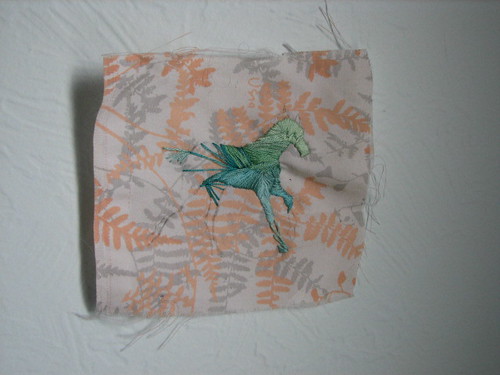It's true, claims the new book "The Fertility Diet" put out by Harvard. Right, and I think I can get pregnant through my belly button...
Tuesday, December 18, 2007
Sunday, December 16, 2007
invisible sperm and their trickery
It turns out we were wrong, sperm aren't tiny animals that battle their way through the fallopian tubes, fighting the woman's warriors sent out by her immune system. Only one brave sperm knight to conquer and be so honored with the fertilizing of the egg. It's so much less complicated than that. What is actually happening is the sperm have something like an invisibility cloak. This is in the form of a sugar glycoprotein that makes the cell undetectable by the always guarding immune system. So the sperm can sneak past as if it were part of the woman's body. This is a valuable adaptation and some cells, like cancer cells and HIV infected white blood cells have adopted it to achieve their much less valiant goal of destruction. I hope we can find ways to make organ donations invisible to the body by adhering these glycoproteins to the transplanted organ. Now that would be valiant.
From this article by the BBC.
From this article by the BBC.
Thursday, December 13, 2007
why pregnant women don't tip over
From the NY Times:
"Pregnant women do not tip over, and researchers say an evolutionary curve has a lot to do with the reason why. During pregnancy, the abdomen grows by nearly one-third and the center of mass shifts forward considerably. That increases pressure on the spinal column, strains the muscles and generally reduces stability. Researchers looked for an additional mechanism, besides the woman leaning back, that might have compensated for the increased strain of pregnancy.
What they found, said Katherine K. Whitcome, a post-doctoral fellow at Harvard and the lead author of the paper, was evidence that evolution had produced a stronger and more flexible lower spine for women. After studying 19 pregnant subjects, Ms. Whitcome found that the lumbar, or lower back, curve in women extends across three vertebrae, as opposed to just two in men. And the connecting points between vertebrae are relatively larger in women, and shaped differently in ways that make the stack more stable and less prone to the bones shifting out of alignment or breaking."
Way to go scientists! Non-Related: I was watching a Carl Sagan video on YouTube about the human brain, and he said that the brain library contains 10,000 times more volumes than the gene library. YIKES! Billions and billions, right.
"Pregnant women do not tip over, and researchers say an evolutionary curve has a lot to do with the reason why. During pregnancy, the abdomen grows by nearly one-third and the center of mass shifts forward considerably. That increases pressure on the spinal column, strains the muscles and generally reduces stability. Researchers looked for an additional mechanism, besides the woman leaning back, that might have compensated for the increased strain of pregnancy.
What they found, said Katherine K. Whitcome, a post-doctoral fellow at Harvard and the lead author of the paper, was evidence that evolution had produced a stronger and more flexible lower spine for women. After studying 19 pregnant subjects, Ms. Whitcome found that the lumbar, or lower back, curve in women extends across three vertebrae, as opposed to just two in men. And the connecting points between vertebrae are relatively larger in women, and shaped differently in ways that make the stack more stable and less prone to the bones shifting out of alignment or breaking."
Way to go scientists! Non-Related: I was watching a Carl Sagan video on YouTube about the human brain, and he said that the brain library contains 10,000 times more volumes than the gene library. YIKES! Billions and billions, right.
Wednesday, December 12, 2007
positions and reasons
From the precious book "Birth: An Anthology of Ancient Texts, Songs, Prayers and Stories" edited by David Meltzer.
"The Position of the Private Parts
At the beginning of the world it had been the Creator's intention to place both men's and women's genitals on their foreheads so that they might be able to procreate children easily. But the otter made a mistake in conveying the message to that effect; and that is how the genitals came to be in the inconvenient place they are now in.
(Translated literally. Told by Ishanashte, 12th July, 1886. Ainu/Northern Islands of Japan.)"
This was told to Basil H. Chamberlain, a British Japanologist active in the 19th century who did some of the earliest translations of Japanese haiku into English, like this one:
The old pond, aye! And the sound of a frog leaping into the water.
"The Position of the Private Parts
At the beginning of the world it had been the Creator's intention to place both men's and women's genitals on their foreheads so that they might be able to procreate children easily. But the otter made a mistake in conveying the message to that effect; and that is how the genitals came to be in the inconvenient place they are now in.
(Translated literally. Told by Ishanashte, 12th July, 1886. Ainu/Northern Islands of Japan.)"
This was told to Basil H. Chamberlain, a British Japanologist active in the 19th century who did some of the earliest translations of Japanese haiku into English, like this one:
The old pond, aye! And the sound of a frog leaping into the water.
Subscribe to:
Comments (Atom)
